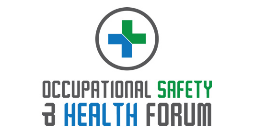Effective emergency response planning is a cornerstone of occupational health and safety (OHS) management. For senior OHS professionals, developing a comprehensive plan that addresses potential hazards and ensures a swift and coordinated response is crucial – here are our top tips…
Key Components of an Emergency Response Plan
- Risk Assessment: Conduct a thorough risk assessment to identify potential hazards and their likelihood of occurrence.
- Emergency Response Team (ERT): Establish an ERT with clearly defined roles and responsibilities for each member.
- Communication Procedures: Develop clear communication protocols for internal and external stakeholders,including emergency services.
- Evacuation Plans: Create detailed evacuation plans for each workplace, including escape routes, assembly points,and procedures for accounting for personnel.
- Emergency Supplies: Ensure adequate supplies of first aid kits, emergency lighting, and other essential equipment are readily available.
- Training and Drills: Conduct regular training and drills to familiarize staff with emergency procedures and test the effectiveness of the plan.
Roles and Responsibilities
- Emergency Coordinator: Oversees the overall emergency response and ensures that procedures are followed.
- First Aiders: Provide immediate medical assistance to injured personnel.
- Evacuation Coordinators: Guide employees to safety during evacuations.
- Liaison Officers: Communicate with external agencies, such as emergency services.
Communication Procedures
- Emergency Notification Systems: Implement reliable systems for notifying employees of emergencies, such as alarms, text messages, or phone calls.
- Public Address Systems: Ensure clear and audible public address systems are in place for emergency announcements.
- Communication Channels: Establish communication channels with external agencies, such as fire departments and police.
Evacuation Strategies
- Escape Routes: Clearly mark escape routes and ensure they are unobstructed.
- Assembly Points: Designate safe assembly points outside the building.
- Accountability Procedures: Implement procedures for accounting for all personnel during and after an evacuation.
Additional Considerations
- Regular Reviews and Updates: Conduct regular reviews of the emergency response plan to ensure it remains effective.
- Testing and Drills: Conduct drills to test the plan’s effectiveness and identify areas for improvement.
- Collaboration with External Agencies: Build relationships with local emergency services to ensure a coordinated response.
- Post-Incident Review: Conduct a thorough review of incidents to identify lessons learned and make necessary adjustments to the plan.
By developing and implementing a comprehensive emergency response plan, senior OHS professionals can help protect employees, assets, and the environment in the event of a crisis.
Are you searching for Disaster Recovery solutions for your organisation? The Occupational Safety & Health Forum can help!
Photo by Austin Distel on Unsplash







